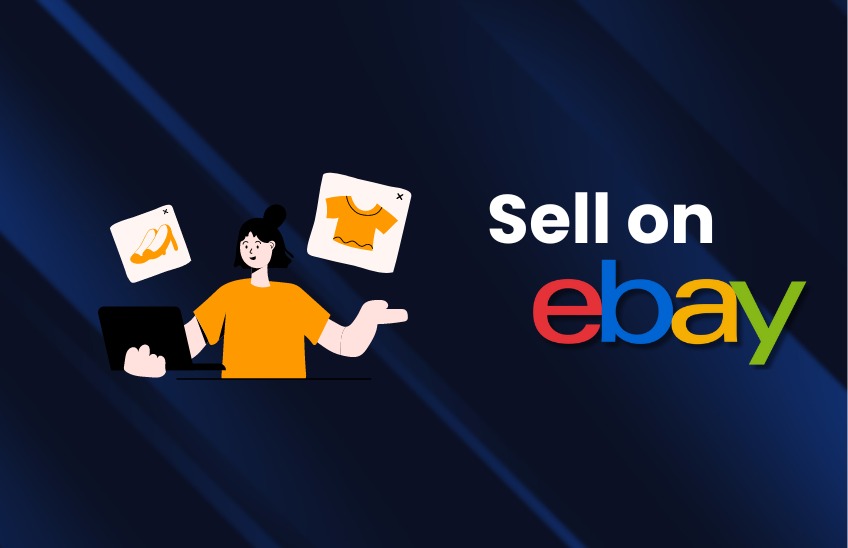
Do you want to launch a new online business or sell the things you no longer need? Selling goods on eBay is a fantastic method to market your products to a worldwide customer base while working from home. This thorough beginner’s tutorial will take you step-by-step through the entire process, from setting up your account to closing your first deal.
1. Create Your eBay Account
The first step in your eBay selling journey is to set up an account. Follow these simple steps:
- Visit the eBay website.
- Click on the “Register” button at the top right corner.
- Choose between a personal account or a business account:
- Personal Account: Ideal for casual sellers or individuals looking to sell personal items.
- Business Account: Suitable for entrepreneurs planning to sell products professionally.
Once you fill out your information, click “Create account.”
Tip: Make sure to use a valid email address, as eBay will send verification and account-related communications there.
2. Set Up Your Seller Profile
A well-crafted seller profile enhances your credibility and helps attract potential buyers. Here’s how to create one:
- Profile Picture: Add a clear profile picture or a business logo.
- Description: Write a concise description about yourself or your business.
- Payment Preferences: Set your preferred payment method, such as PayPal or eBay-managed payments.
3. Decide What to Sell on eBay
Before diving into listings, research products that are in demand. Here are a few ideas to get you started:
- Declutter Your Home: Start by selling items you no longer need, such as clothes, electronics, or collectibles.
- Research Trends: Explore eBay’s trending section to identify popular items and categories.
- Source Products: If you want to scale your selling efforts, consider sourcing products from wholesalers or local suppliers.
Tip: Use eBay’s completed listings feature to see how similar items are priced and how quickly they sell.
4. Create Your First eBay Listing
Creating an effective listing is crucial for attracting buyers. Follow these guidelines:
- Title: Write a clear and descriptive title. Use relevant keywords to optimize searchability. For example, “Brand New Apple iPhone 13 – 128GB, Midnight Black, Unlocked.”
- Photos: Upload high-quality images from multiple angles. Good lighting and clear backgrounds make a significant difference.
- Description: Provide a detailed product description, including key features, condition, and any imperfections. Transparency builds trust.
- Category: Choose the appropriate category to enhance visibility.
Tip: eBay’s listing tools can help you format your listing and optimize it for search engines.
5. Set Shipping and Return Policies
Shipping and return policies can significantly influence buyer decisions. Here’s how to set them:
- Shipping: Offer multiple shipping options, including standard and expedited. Free shipping can increase your sales.
- Returns: Decide on your return policy (e.g., 14 or 30 days) and clearly communicate it in your listing.
Tip: Use eBay’s shipping calculator to estimate costs and determine the best options for your products.
6. Understand eBay Fees
Familiarize yourself with eBay’s fee structure to avoid surprises. Here are the primary fees you should know about:
- Insertion Fees: A small fee for listing items (most sellers receive a number of free listings each month).
- Final Value Fees: A percentage of the sale price, including shipping. This fee is charged only when your item sells.
Tip: eBay provides a fee calculator to help you estimate costs associated with selling your items.
7. Manage Orders and Provide Excellent Customer Service
Once you start receiving offers or sales, managing orders effectively is crucial:
- Prompt Shipping: Ship items quickly to meet buyer expectations. Use quality packaging to prevent damage.
- Communicate with Buyers: Proactively address any concerns or inquiries from buyers. Good communication builds trust.
- Request Feedback: Encourage buyers to leave feedback, as positive reviews enhance your reputation on the platform.
8. Grow Your eBay Business
After you complete a few sales, consider ways to expand your eBay business:
- Optimize Listings: Experiment with different titles, descriptions, and pricing strategies to improve visibility.
- Diversify Products: Introduce new products or explore different categories to broaden your offerings.
- Promote Listings: Use eBay’s promotional tools, like Promoted Listings, to increase visibility for your products.
Tip: Joining Our eCommerce Community to get valuable insights and tips from our experienced students sellers.
Conclusion
Starting to sell on eBay can be a rewarding experience, allowing you to declutter your home or build a thriving e-commerce business. By following these steps, you’ll be well-equipped to make your first sale and grow your presence on the platform.
Ready to take your eBay selling to the next level? Join our expert-led eBay Course at IDB Pakistan for in-depth strategies and insights to maximize your profits!


